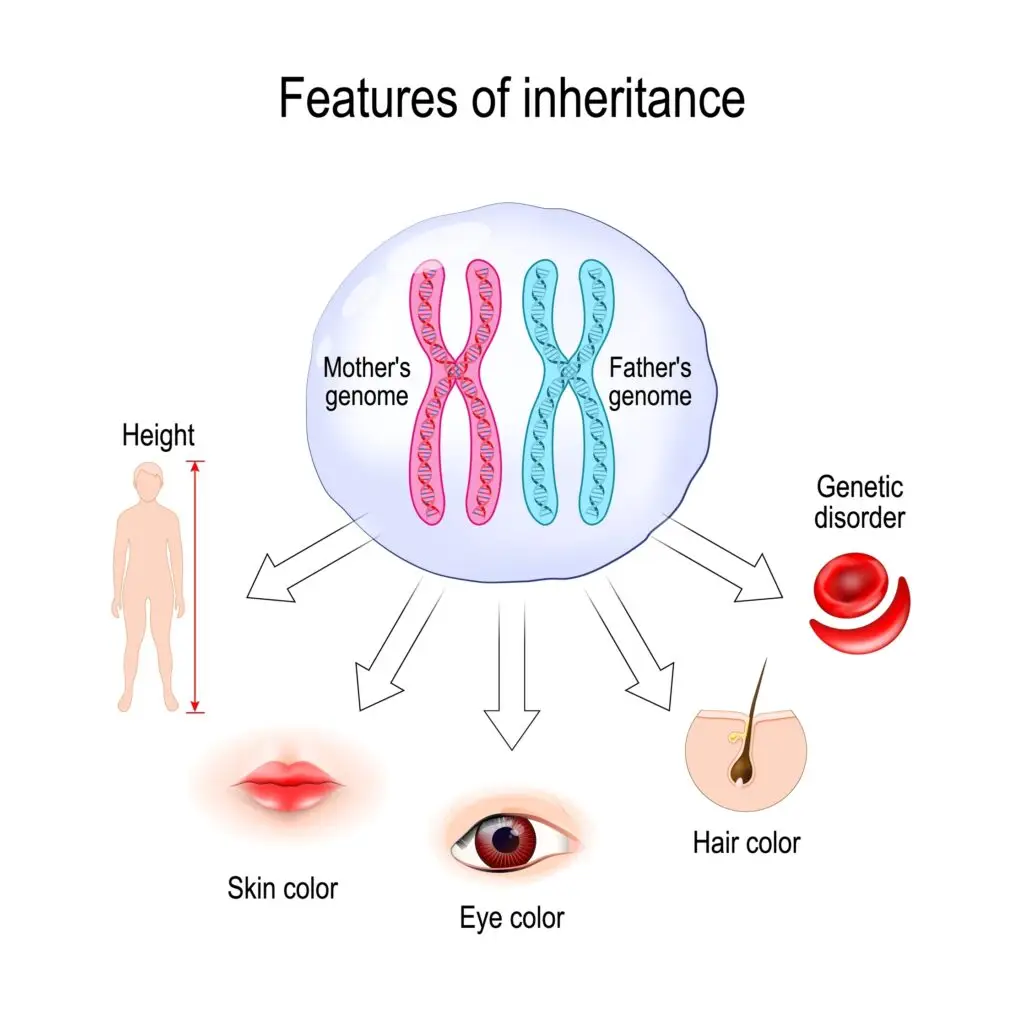Genotype
Definition of Genotype
A genotype is the complete set of genes that an organism inherits from its parents. These genes determine traits like eye color, height, and even disease risks. While the genotype refers to the genetic code, the observable traits are called the phenotype. For example, two individuals may share the same genotype for eye color, but environmental factors can influence the exact shade. Genotypes are like blueprints that guide the development and functioning of living organisms. Scientists study them to understand how traits are passed from one generation to the next.
How Does a Genotype Influence Traits?
Genotypes influence traits by determining which proteins a cell produces. These proteins control everything from how cells grow to how they respond to the environment. For example, a genotype might contain instructions for producing a specific pigment that gives hair its color. However, traits can also depend on interactions between multiple genes and environmental factors. Understanding how genotypes work helps explain the diversity of traits in living organisms.
What Is the Difference Between Genotype and Phenotype?
A genotype refers to an organism’s genetic makeup, while a phenotype is the physical expression of those genes. For instance, a person may have a genotype that includes genes for tall height, but poor nutrition might limit their growth. The genotype provides the instructions, but the phenotype shows how those instructions play out in real life. This distinction is important for understanding how genes and the environment shape living things.
How Are Genotypes Studied in Modern Genetics?
Scientists study genotypes using tools like DNA sequencing and genetic testing. These methods allow researchers to read an organism’s genetic code and identify specific genes. By analyzing genotypes, scientists can predict inherited traits and the likelihood of developing certain diseases. Genotyping also plays a role in personalized medicine, where treatments are tailored to an individual’s genetic makeup. Advances in technology have made studying genotypes faster and more accurate than ever before.
What Is a Homozygous Genotype?
A homozygous genotype occurs when an organism inherits identical alleles for a specific gene from both parents. For example, if both alleles code for brown eyes, the organism will have a homozygous genotype for that trait. This can influence whether a trait is dominant or recessive. Homozygous genotypes are important for studying inherited conditions and predicting offspring traits. Understanding this concept helps explain how traits are passed down through generations.
How Does a Genotype Affect Inherited Diseases?
Some genotypes increase the risk of inherited diseases by carrying mutations. For example, a specific genotype might make an individual more likely to develop cystic fibrosis or sickle cell anemia. These conditions occur when a person inherits two copies of a defective gene. Genetic testing can reveal whether someone carries a genotype associated with a particular disease. Knowing this information helps with early diagnosis and treatment.
What Is the Role of Genotypes in Evolution?
Genotypes play a key role in evolution by introducing genetic variation within populations. Mutations in genotypes can create new traits, some of which may improve survival or reproduction. Over time, these advantageous genotypes become more common in a species. For example, a genotype that provides resistance to a disease might spread throughout a population. Studying genotypes helps scientists understand how species adapt to their environments over generations.
How Are Genotypes Passed Down Through Generations?
Genotypes are passed from parents to offspring through DNA during reproduction. Each parent contributes half of their genetic material, creating a unique combination in their child. This mix determines the child’s genotype and influences their traits. Patterns of inheritance, such as dominant and recessive genes, explain how specific traits appear in families. Understanding this process helps explain the genetic diversity seen in all living things.
What Is a Heterozygous Genotype?
A heterozygous genotype occurs when an organism inherits two different alleles for a gene. For example, one allele might code for blue eyes while the other codes for brown eyes. In this case, the dominant allele usually determines the trait that is expressed. Heterozygous genotypes contribute to genetic diversity by combining different traits from each parent. Studying these genotypes helps scientists understand how genes interact and influence traits.
Why Are Genotypes Important for Personalized Medicine?
Genotypes are crucial for developing personalized medicine, where treatments are tailored to an individual’s genetic makeup. For instance, certain genotypes influence how a person responds to specific medications. Doctors can use genetic testing to identify these variations and prescribe more effective treatments. Personalized medicine helps improve outcomes by targeting therapies to an individual’s unique genetic profile. This approach represents a major advancement in healthcare.
